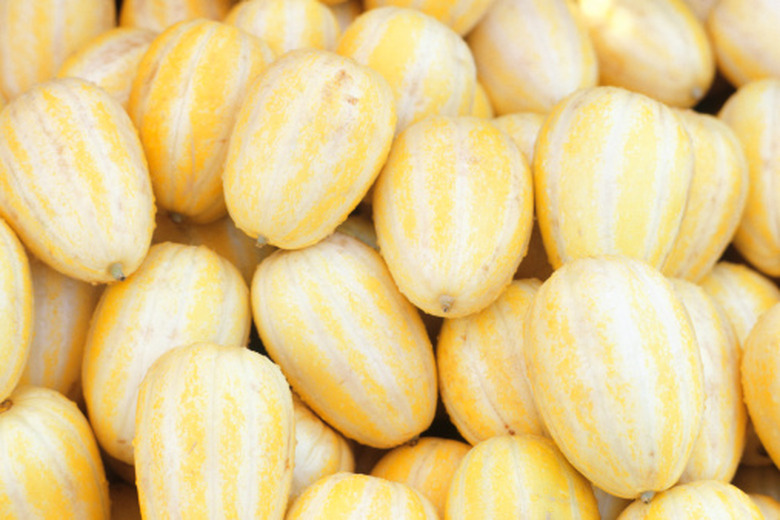How To Grow Korean Melons
Things Needed
- Organic compost
- Hand fork
- Fertilizer
- Mulch
Tip
Harvest Korean melons at their maturity dates. Don't leave these melons on the vine for further ripening — they'll rot or sunburn.
Melons grow in spring, summer and fall, in a range of different varieties and cultivars. Korean melons hail from Asia and Korea and feature thin gold skin, pale peach to white flesh, and cantaloupe-like flavor. Korean melons may have smooth or striped skin and be circular or oblong, depending on cultivar. They need melon-appropriate planting environments to thrive and bear fruit.
Step 1
Plant Korean melon seeds or seedlings in spring when the ground and air warm to 65 to 70 degrees F. Melon plants will fail in frost or cold, wet soil. Plant Korean melons in areas with three- to four-month summers to give them at least 55 days of warm growing.
Step 2
Choose appropriate planting sites. Korean melons need full sun exposure all day, quick drainage and good air circulation. Allow 2 feet of space per plant in the row and 6 to 8 feet between rows.
- Melons grow in spring, summer and fall, in a range of different varieties and cultivars.
- Plant Korean melons in areas with three- to four-month summers to give them at least 55 days of warm growing.
Step 3
Amend the soil only in your marked planting sites to save work and resources. Dig into the top 10 inches in a 6-inch band, and turn 3 to 4 inches of organic compost into the natural soil for a loose, moist and nutritious foundation. Mix 5-10-10 fertilizer into the top 3 inches, per manufacturer directions, for a boost in nutrition.
Step 4
Plant Korean melon seeds 1/2 to 3/4 inch deep in your planting sites. Plant seedlings for a quicker start, in holes as deep and wide as their root balls.
Step 5
Water each Korean melon seed or seedling with 2 inches of water to settle the soil, and maintain weekly waterings of this amount. Spread 2 inches of organic mulch in a 2-foot circle around each plant to keep soil moist and free of weeds.
- Amend the soil only in your marked planting sites to save work and resources.
- Spread 2 inches of organic mulch in a 2-foot circle around each plant to keep soil moist and free of weeds.
Step 6
Fertilizer the melons with 33-0-0 fertilizer a week after they bloom, at a rate of 1 tbsp. per plant. Pour the fertilizer onto the soil to the side of the stem, and mix it into the top 2 inches of soil and water.
